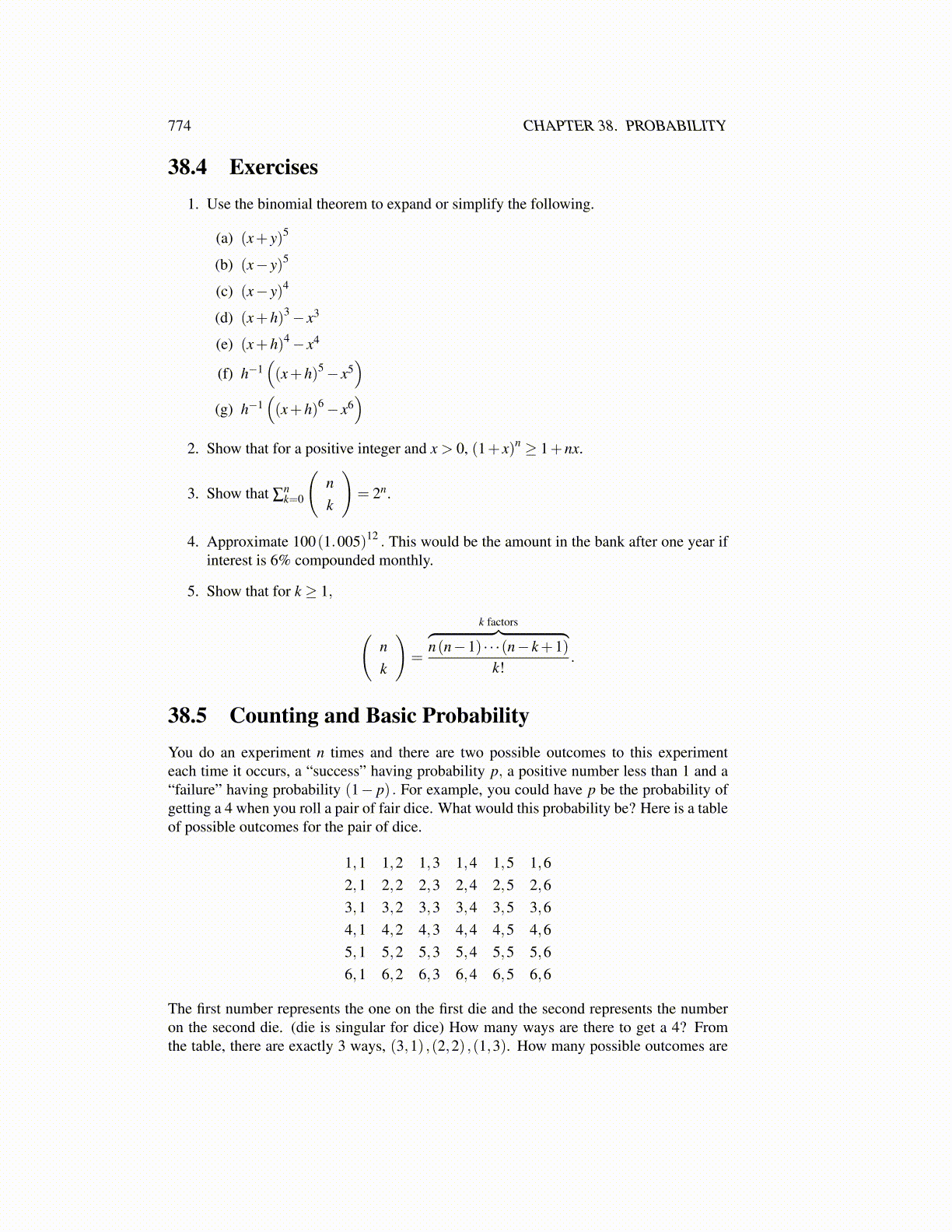
774 CHAPTER 38. PROBABILITY
38.4 Exercises1. Use the binomial theorem to expand or simplify the following.
(a) (x+ y)5
(b) (x− y)5
(c) (x− y)4
(d) (x+h)3− x3
(e) (x+h)4− x4
(f) h−1((x+h)5− x5
)(g) h−1
((x+h)6− x6
)2. Show that for a positive integer and x > 0, (1+ x)n ≥ 1+nx.
3. Show that ∑nk=0
(nk
)= 2n.
4. Approximate 100(1.005)12 . This would be the amount in the bank after one year ifinterest is 6% compounded monthly.
5. Show that for k ≥ 1,
(nk
)=
k factors︷ ︸︸ ︷n(n−1) · · ·(n− k+1)
k!.
38.5 Counting and Basic ProbabilityYou do an experiment n times and there are two possible outcomes to this experimenteach time it occurs, a “success” having probability p, a positive number less than 1 and a“failure” having probability (1− p) . For example, you could have p be the probability ofgetting a 4 when you roll a pair of fair dice. What would this probability be? Here is a tableof possible outcomes for the pair of dice.
1,1 1,2 1,3 1,4 1,5 1,62,1 2,2 2,3 2,4 2,5 2,63,1 3,2 3,3 3,4 3,5 3,64,1 4,2 4,3 4,4 4,5 4,65,1 5,2 5,3 5,4 5,5 5,66,1 6,2 6,3 6,4 6,5 6,6
The first number represents the one on the first die and the second represents the numberon the second die. (die is singular for dice) How many ways are there to get a 4? Fromthe table, there are exactly 3 ways, (3,1) ,(2,2) ,(1,3). How many possible outcomes are